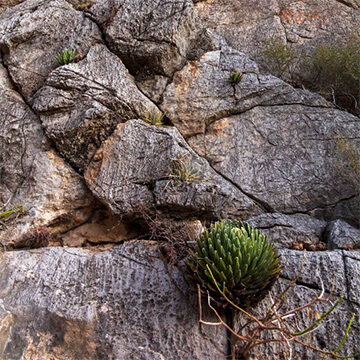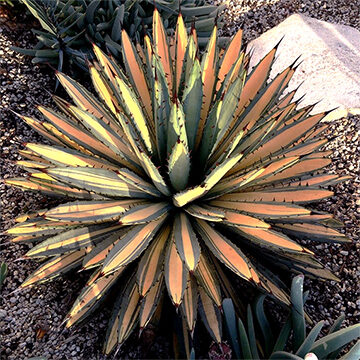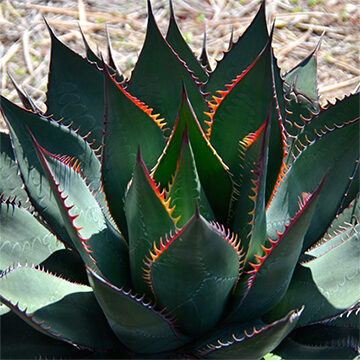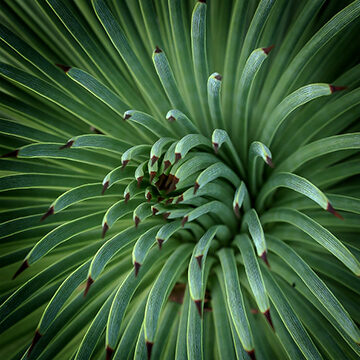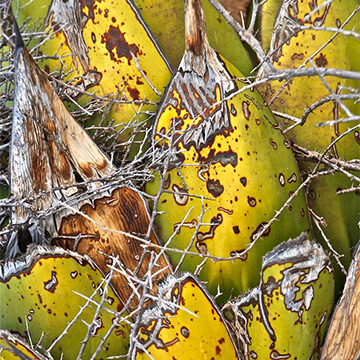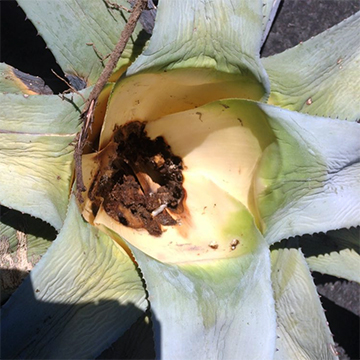Tribe: Agavoideae
Family: Asparagaceae
Number of species: around 270
Introduction
Agave is a genus native to arid and semiarid regions of the Americas, particularly Mexico, and the Caribbean (Britannica).
Because some agaves are naturally invasive, they are prone to ‘escape’ from cultivation and spread into the nearby habitats of native succulents that are unable to compete with the more robust species (Charles 2013).
|
|
|
The rosette diameters of different agave species vary considerably from miniatures of just 15cm to monsters more than 5m in diameter (Charles 2013).
The succulent leaves are tough and tapering, some with attractive margins, most with fierce spikes on the ends (Charles 2013). Leave margins can be smooth or spiny; the leaf tip always has a sharp point (Mason 2015). The leaves are fleshy and have prickly spines along the sides as well as pointy tips (Matsuyama 2020). The leaves are also hard and the centre leaves close in tightly, giving them a bud-like appearance. Agave spreads in a beautiful rosette shape (Matsuyama 2020). All agaves have leaves with hard, sharp, pointed tips that can penetrate skin with ease, and many have teeth at the edge of the leaf that can tear clothing or skin. It does not harm the plant to dull or remove these leaf tips for safety’s sake (Chance 2012).
|
|
|
The hardiest members in this genus tend to have bluish leaves; more tropical, light green-laved or variegated cultivars are slightly less hardy (Toogood 1999). Generally it’s very easy to take care of. (Matsuyama 2020).
Flowers are rarely produced on house plants (Bailey and Allaway 2019).
|
|
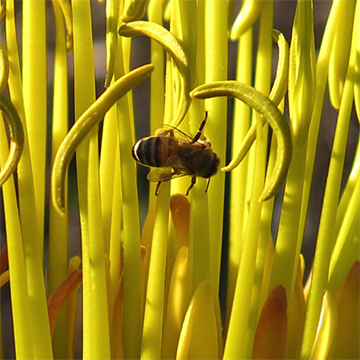 Agave shawii in bloom (photo credit: thenaturecollective.org) Agave shawii in bloom (photo credit: thenaturecollective.org) |
The small species flower only after 5 to 10 years and the taller species may take up to 40 years to flower (500 Popular Tropical Plants 1999). Some are monocarpic, dying once they have flowered; with other species, each rosette dies after flowering (Toogood 1999). The flower-spike is always exceptionally tall when compared to the size of the rosette it rises from, and it shoots up quite quickly. In most, but not all species, the tube-shaped flowers are yellow and can be quite showy when viewed closely. Many species are self-fertile, meaning that viable seed can usually be obtained from a single blooming plant, if pollination occurs (Chance 2012).
They tolerate a minimum of 5-10°C, depending on the species (Toogood 1999). The plants of some species vary greatly in their ability to withstand cold (Chance 2012). Very hardy; once established, require virtually no attention (Mason 2015). Some species are reasonably hardy and can be grown outdoors with great architectural effect in many parts of the world (Charles 2013).
Cultivation
Growing Media
Grow in slightly acidic, well-drained soil (Mason 2015). Plant in well-drained, gritty soil (500 Popular Tropical Plants 1999).
Watering
Be generous when watering (Matsuyama 2020). During the spring and summer, water when the top 2cm of compost is dry. In autumn and winter keep the compost almost dry, watering just enough to prevent the leaves shrivelling (Bailey and Allaway 2019).
|
|
|
Lighting
Let it have plenty of sunlight and it will reward you with a beautiful flower (Matsuyama 2020).
Fertilization
In spring and summer, all agaves will grow more rapidly if they are fertilized and given additional water during hot, dry weather, but it is not necessary.
Propagation
By seeds (from spring to summer) and by division (from spring to summer). Mostly by taking offsets or tissue culture. Most species tend to flower only once before dying. Some can take up to 100 years before flowering though. Seed takes a long time to be produced, but does germinate rapidly (Mason 2015). Are easy to grow from seeds, if available. Most species offset readily, lending themselves to division (Toogood 1999).
Health Issues
They are susceptible to scale inspects (Mason 2015). These plants will rot in wet compost. Pests to look out for include scale insects and mealy bugs (Bailey and Allaway 2019).
|
|
|
Literature
500 Popular Tropical Plants 1999
Bailey F. and Z. Allaway. Practical Cactus and Succulent Book. London: Dodling Kindersley, 2019.
Chance, Leo J. Cacti and Succulents for Cold Climates. Portland: Timber, 2012
Charles, Graham. Cacti and Succulents: An Illustrated Guide to the Plants and their Cultivation. Ramsbury: Crowood, 2013
Mason, John. Succulents. Nerang: ACS 2015
Matsuyama, Misa. The Gardener’s Guide to Succulents. Tokyo: Tuttle, 2020
Toogood, Alan. Plant Propagation: The Fully Illustrated Plant-by-Plant Manual of Practical Technique. London: DK, 1999


